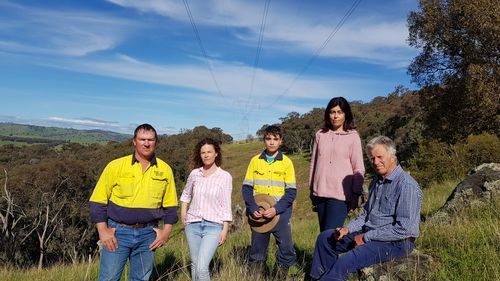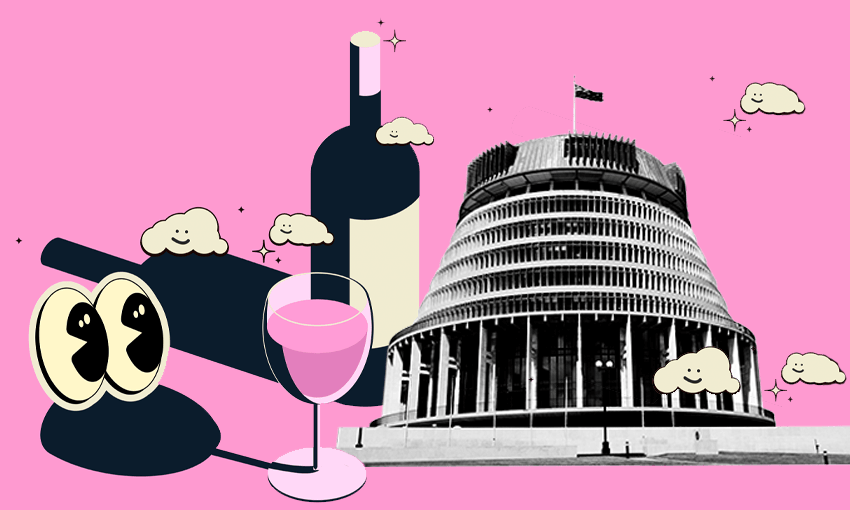Up for debate is how Transgrid, the privatised NSW transmission monopoly, chooses to do that: overground or underground.
It is a complicated debate.
Depending on who is speaking about HumeLink, you’ll hear about the crucial supply of clean energy to reduce Australia’s carbon emissions, and how vehement opposition to the project is slowing the project down.
Then there’s the damage the lines will inflict on large swathes of tranquil private property and multigenerational farming operations, and the potential harm to wildlife, nature and tourism.
And it’s impossible to ignore the question of whether or not the chain of 80-metre-high steel masts which will carry high voltage lines that stretch 360km across the NSW hinterland is a bushfire risk in an area prone to devastating fires.
The cost of building the 500kV line has already blown out from $3.3 billion to about $5 billion, but farmers want Transgrid to cough up billions more and sink the line underground, an option they argue is safer and less destructive than the 70-metre-wide ugly “scar” that will otherwise sit underneath the overhead lines.
A Transgrid spokesperson told 9news.com.au that going subterranean, as has been done in California and Germany, could increase costs by $5 billion to $10 billion.
Wherever the costs might land, the spokesperson insisted an underground route will delay HumeLink by three to five years, “slowing down the delivery of cheaper, cleaner renewables into the grid”.
‘Scared stiff’ behind lines
Michael Katz, who owns a Wagyu beef stud west of Goulburn, told 9news.com.au that, if built, the overground lines “basically constitute a wall” that could trap his family in the event of a bushfire, such as the 2019 Dunns Road blaze.
Heavy smoke around high voltage lines, such as the HumeLink, can create “arcing”, a dangerous phenomenon which results in electricity jumping through air because of elevated levels of carbon particles.
Katz paints an alarming picture.
“If you drive a vehicle under those lines, you’ve got a really high risk of causing a current to flash across, and you’re toast,” Katz said.
“In the event of a bushfire, we could so easily be trapped in our homestead by this wall of high tension lines … which would prevent us from escaping because we’re at the end of a long road and lines run across the road.
“So we’re genuinely scared stiff.”

The Transgrid spokesperson said the company works “very closely” with the RFS, and this included “de-engergising” lines when needed during bushfires “to provide safe and secure access” for firefighters and to “assist with bushfire containment”.
Landowners say the 360km line, from Mount Kosciuszko National Park to Bannaby north-west of Goulburn, will trash huge chunks of the high country made famous by bush poet Banjo Paterson.
Countless native trees will be razed, they say, with severe consequences for grazing livestock, wildlife and animals, pastures and ecosystems.
Opponents of the line talk about a 70-metre-wide easement, cleared of vegetation, which will run under the lines.
An underground option would significantly reduce that easement to 15 metres, they argue.
Rebecca Tobin, whose family have run a cattle farm for four generations at Darlow outside Adelong, told 9news.com.au she has lost countless hours of sleep over HumeLink.
“We have all sorts of wildlife and native animals in that part of our property that will be impacted,” Tobin said.
Decades-old stands of red gums, stringybarks and kurrajong trees, which are home to protected wedge-tailed eagles and a multitude of other birdlife, will be made homeless, she said.
“We even currently have an emu up there on our hill. It’s very cool.”
Tobin’s grandfather, Stewart Gordon Smith, was given the land as a soldier settlement block on his return from World War II, after fighting Japanese forces in New Guinea.
“I can only imagine what my grandfather would be thinking,” Tobin said, describing HumeLink overground lines as “devastating”.
Electricity masts standing 35 metres high already run across Tobin’s land.
HumeLink masts would be more than double that height.

Those masts will stop helicopters being able to spray and fertilise pastureland close to the proposed lines, Tobin said.
He claimed they could also complicate firefighting aerial operations.
“It’s going to industrialise our beautiful rural landscape. And we’re going to see prime, workable agricultural land lost.
“With generational farming, it’s our legacy that we pass on to the next generation.”

What sea level rise will look like around the globe
Tobin said the three-year fight against the Transgrid plan has taken a heavy toll on some in the community.
“People’s mental health has deteriorated and, in some cases, failed them under the stress.”
A final parliamentary inquiry hearing is scheduled for next week.





















Discussion about this post